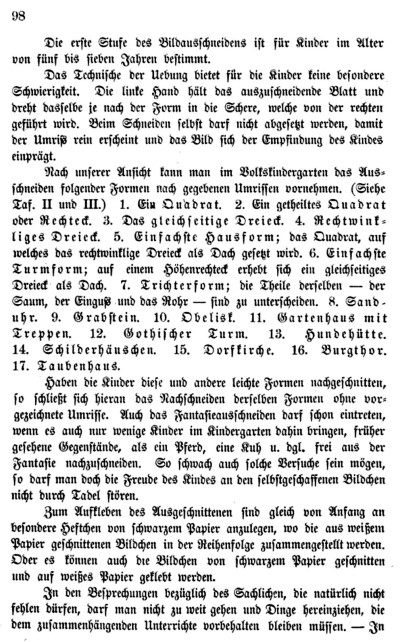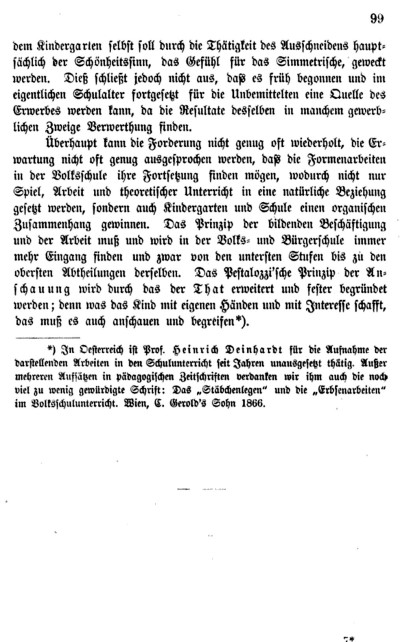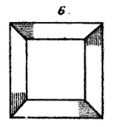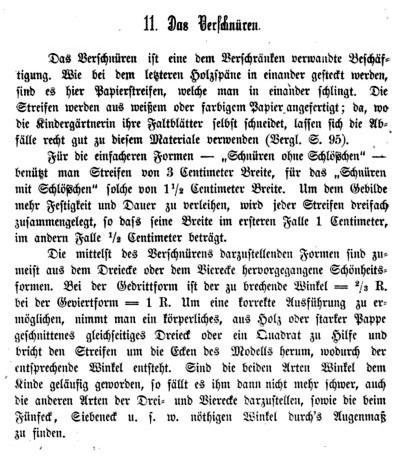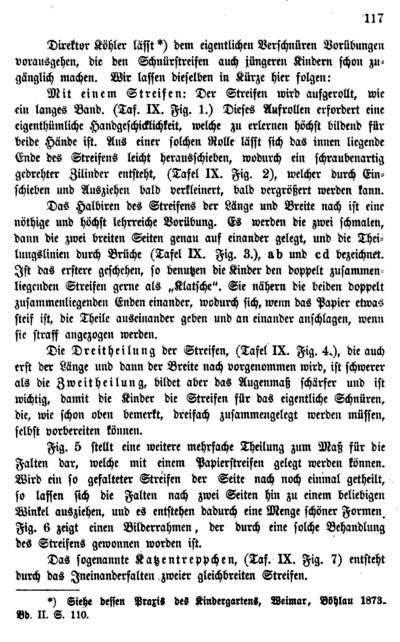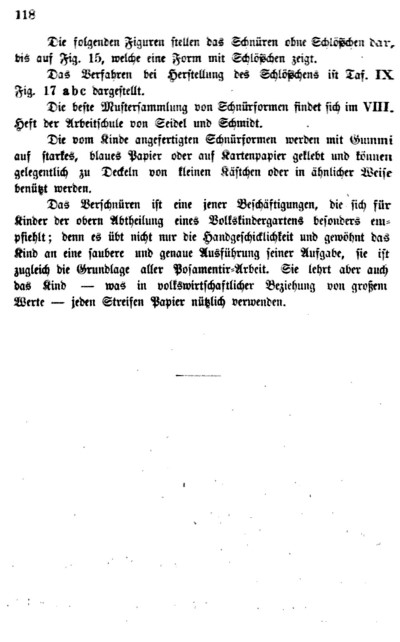| The Public Paperfolding History Project
Last updated 17/11/2025 x |
|||||||
| Der Kindergarten: Theoretisch-Praktisches Handbuch by A S Fischer, 1873 | |||||||
'Der Kindergarten: Theoretisch-Praktisches Handbuch' by A S Fischer was published by Alfred Holder in Vienna in 1873. . It contains some designs folded from paper strips (presented as preliminary exercises for the occupation of Verschnuren). The illustrations appear to have been redrawn from 'Die Praxis Des Kindergartens' by August Koehler A full copy of this work can be accessed online here. A second, heavily revised, edition was published in 1883. **********
********** Analysis Das Falten This section first describes Froebel's method of obtaining four squares from a rectangle, then explains how to crease in the diagonals and blintz the corners inwards, mostly as a mathematical exercise, then says, roughly translated, 'And now, by folding and unfolding, by bending up and down, the child develops Lebensformen in ever-changing ways, such as, bird, sailboat, double boat, salt cellar, flower, kite etc, but also a multitude of Schonheitsformen' and 'It is pointless and impossible to give an exact description here of how the manifold Schonheitsformen and Lebensformen can be achieved through folding.' **********
********** Das Ausschneiden This section begins with a basic description of the Froebelian occupation of Ausschneiden und Aufkleben but then concentrates more on the cutting out of printed shapes or free cutting (without the use of folds to help create symmetry). About this, the author says, roughly translated, 'We follow the views expressed by Dr Georgens ...'.
********** Das Flechten This section is mostly about Frame Weaving but at the end the author says, roughly translated, 'We would also like to point out free braiding, without the use of the weaving mat, by means of which the so-called bookmarks are made. We refer you to Koehler's 'Flechtlehre' (Weimer, Bohlau, 1863) which deals with the subject in detail.'
********** Das Verschnuren Preliminary exercises The author states that, roughly translated, 'Director Koehler has the actual lacing preceeded by exercises that make the lacing strips accessible to even the youngest children.' These are: Screw-like cylinder - The Butterchurn The text says the roll can be 'reduced or enlarged by pushing and pulling'.
********** Klatsche - The Clapper The text says that 'children like to use the double-folded strip as a clapper', but without explaining how this is done.
********** Preparation of the lacing strips by folding into thirds
********** The Pull-Out Picture Frame The text says that by preparing a strip as shown, then folding it in half lengthways, the corners can be pulled out to create various forms including a picture frame.
********** Katzentreppchen (cat staircase) - The Witch's Ladder
********** The Paper Rosette These designs / illustrations are not referred to in the text
********** Verschnuren The text distinguishes between two kinds of designs here, normal and locked, the locked design being shown in picture 17. The text says, 'The best collection of lacing patterns can be found in Volume 5 of der 'Arbeitschule' by Seidel and Schmidt.'
********** |
|||||||





